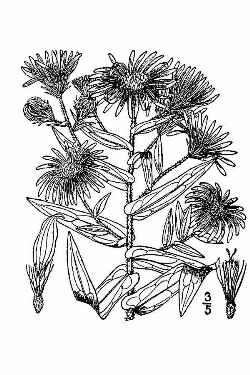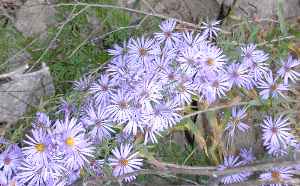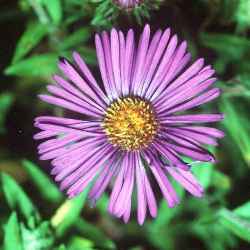New England Aster
Scientific Name: Aster novae-angliae L.
Synonym: Aster roseus, Symphyotrichum novae-angliae, Virgulus novae-angliae
Family: Asteraceae

Britton, N.L., and A. Brown. 1913. Illustrated flora of the northern states and Canada. Vol. 3: 20. Courtesy of Kentucky Native Plant Society. Scanned by Omnitek Inc.
Sunset®: All zones
USDA: 5-8
Heat Tolerance: Questionable, maybe as a winter annual in the hot deserts
Sun Exposure: Full sun
Origin: Eastern North America
Growth Habits: Perennial, 1 to 5 feet tall (30-150 cm), 2 to 3 feet spread (60-90 cm), hairy leaves, many cultivars are dwarf
Flowers: Pink, red or purple flowers
Watering Needs: Does better in wet areas
Propagation: Division in spring or late fall, cuttings in spring, seeds

Attracts butterflies.

Robert H. Mohlenbrock @ USDA-NRCS PLANTS Database / USDA SCS. 1989. Midwest wetland flora: Field office illustrated guide to plant species. Midwest National Technical Center, Lincoln, NE.
Blooming Habits:
Abundant dark purple flowers, 2 inches in diameter (5 cm), at the end of the summer. The plants may be cut to the ground after blooming.
Desert-Tropicals is dedicated to provide gardening advice, gardening ideas, and information about flower of all kind for landscape and collections.We try to check carefully the identification of the plants on the illustrations as well as the other information from the page, but occasionally errors do occur. if you notice anything that needs to be changed please contact us.Thanks.
© 1998-2020 Philippe Faucon, All Rights Reserved.